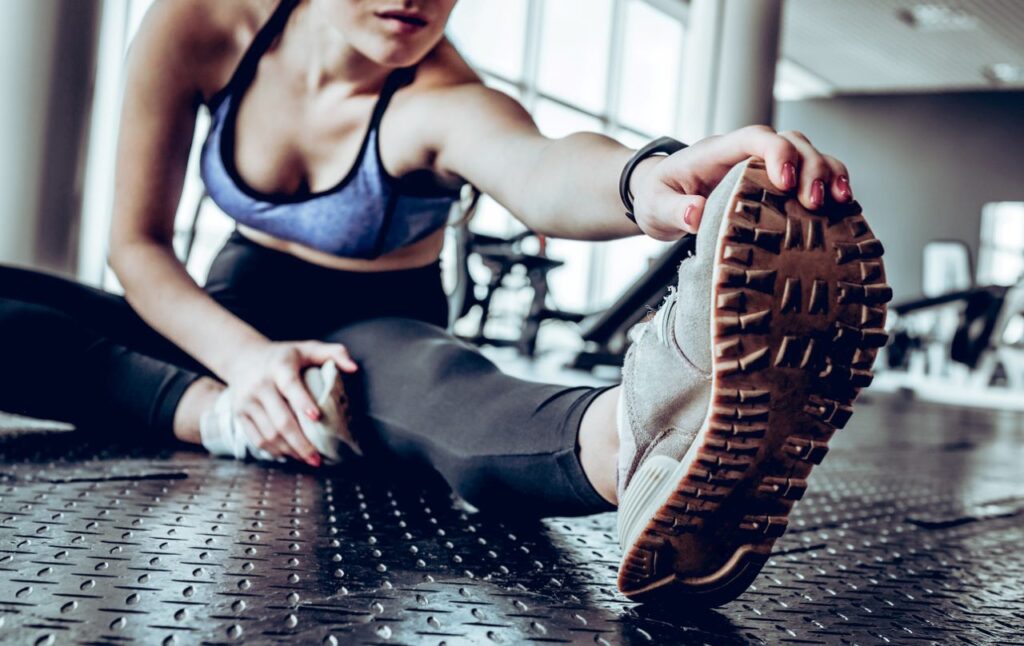Tuesday, April 2nd, 2024
If you’ve ever wondered why your gym buddy keeps harping on about stretching, or if you’ve skipped stretching because it seems like a less-than-exciting precursor to the real workout, stick around. Today, we’re diving deep into why stretching is not just a good-to-have but a must-have in your fitness regimen.
So whether you’re a seasoned athlete or someone who’s just starting their fitness journey, understanding the role of stretching can transform your approach to exercise and significantly improve your overall health and performance. Let’s take a closer look.
What is Stretching?
Let’s cut straight to the chase: stretching is essentially the act of extending your muscles to their full length. Sounds simple, right? But there’s more to it than just pulling your muscles like they’re some kind of elastic band. Stretching is about gently pushing your body beyond its comfort zone to increase flexibility and ease of movement. Whether you’re a yoga enthusiast, a gym junkie, or someone who just likes to stay active, incorporating stretching into your routine is a game changer.
Why is Stretching Important?
Now, you might be wondering, “Why is stretching so crucial?” Well, for starters, it prepares your body for the workout ahead or helps it cool down after a sweat session. But it’s not just about warming up or cooling down. Stretching plays a pivotal role in preventing injuries, enhancing performance, and even improving posture. It’s the unsung hero of fitness routines, ensuring your body can handle whatever you throw at it.
Benefits of Stretching
Enhances Flexibility
First off, if you understand the significance of functional mobility, you may already know that regular stretching can significantly improve your flexibility. This means better range of motion, less stiffness, and more freedom in your movements. Imagine reaching the top shelf or tying your shoelaces without feeling like you’re about to snap – that’s the magic of enhanced flexibility.
Reduces Injury Risks
Stretching isn’t just about being bendy; it’s also a protective measure. By increasing the flexibility and strength of muscles, you’re less likely to encounter sprains, strains, and muscle tears. Think of it as armor for your muscles, keeping them safe while you conquer your fitness goals.
Boosts Blood Flow
Ever feel like a rusty Tin Man in the morning? Stretching can get your blood flowing, delivering essential nutrients to your muscles and improving circulation. This not only wakes you up but also helps with muscle recovery and reduces post-exercise soreness.
Types of Stretching

Brief Overview of Dynamic Stretching
Dynamic stretching involves moving parts of your body and gradually increasing reach, speed, or both. It’s like mimicking the activity you’re about to do but at a lower intensity. Perfect for warming up, it gets the blood pumping and preps your muscles for action.
Brief Overview of Static Stretching
Then there’s static stretching, where you hold a stretch in a comfortable position for a certain period. This type is ideal for cooling down after a workout, helping to relax your muscles and increase their length over time.
Brief Overview of PNF Stretching
Proprioceptive Neuromuscular Facilitation (PNF) stretching is a bit of a mouthful, but it’s a highly effective technique. It combines stretching and contracting the muscle group being targeted, providing both flexibility and strength benefits. It’s a bit advanced but definitely worth exploring.
When and How to Stretch
Timing is everything with stretching – dynamic stretches are your go-to before workouts to prep your muscles. After you’re done sweating it out, switch to static stretching to help your muscles relax and recover. And remember, consistency is key; make stretching a regular part of your fitness regime for the best results.
How Long Should I Stretch to Get the Most Benefits?
The ideal duration for a stretching session can vary based on your objectives, the type of stretching, and where it fits into your workout routine. For dynamic stretches, which are best performed before a workout, aim for 5 to 10 minutes to thoroughly warm up your muscles. Each stretch should be performed for about 30 to 60 seconds, ensuring you’re moving through the stretch.
Stretching for Different Activities
Whether you’re lifting weights, running marathons, or hitting the yoga mat, stretching has a place in your routine. Each activity benefits from tailored stretching exercises that focus on the muscles involved, enhancing both performance and enjoyment.
Final Thoughts
In the grand scheme of things, stretching might seem like a small, perhaps even negligible, part of your fitness journey. But its impact is anything but. From your boosting flexibility and performance to reducing injury risks, the benefits of stretching are vast and varied. So why not make it a staple of your routine?
And if you’re looking to take your fitness to the next level, come visit us at FitFlexFly! We’re a top Indianapolis gym offering immersive classes, private training, state-of-the-art equipment and support from our licensed fitness professionals, so no matter what your fitness goals are, we can help you achieve them.

